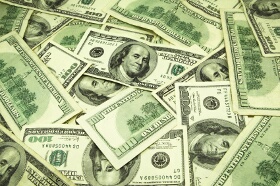The dollar rose to its strongest level since 2003 against the euro and a basket of major currencies on Wednesday. The US currencyâs surge that lasted for six days in a row drew strength from speculations that President-elect Donald Trump might increase fiscal spending.
Investors expect that US inflation will get a strong push from the administration of Trump, which is set to introduce new tax cuts and increase fiscal spending to support economic growth rate. A higher inflation rate will prompt the Federal Reserve to accelerate the pace of raising its interest rates. Futures prices show a 90.6% probability for an interest rate hike in December and an 87.4% chance for another hike in February, according to the CME Group FedWatch tool.
A stream of comments from Federal Reserveâs regional presidents confirmed that a rate hike in December is, for all practical purposes, a certainty. The latest comment came from Federal Reserve St. Louis President James Bullard, who said that he believes Decemberâs raise is appropriate and on time. Investors are now eager to hear the testimony of Federal Reserve Governor Janet Yellen, which she will give in front of the Congress tomorrow.
The dollarâs rise gained more strength as bond traders continued shedding their holdings following Trumpâs surprising victory in the US presidential election, causing a rout in the global bond market. US bond yields rose today to their highest levels since December 2015.
EUR/USD touched 1.0672 as of 15:57 GMT, the pairâs lowest level since 2003. EUR/USD opened today at 1.0720 before it moved down. GBP/USD was at 1.2429 after touching its lowest level for the day at 1.2413. The pair opened on Wednesday at 1.2454.
The Dollar Index, which measures the strength of the US currency against its major peers, moved to 100.4 as of 15:49 GMT from 100.2 on Tuesday.
If you have any questions, comments or opinions regarding the US Dollar,
feel free to post them using the commentary form below.
